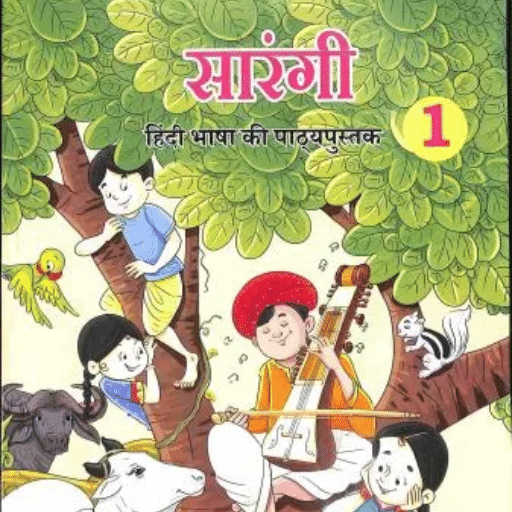Major Products of Various Natural Regions and Land Use | Additional Study Material for UPSC PDF Download
Equatorial Region: These regions have dense forests of evergreen trees but they are not suitable for human habitation. Some medicinal forest products are gathered.
Tropical Grasslands: Agriculture and cattle-rearing are the chief occupations and wool, skins and hides the chief commercial products.
Tropical Monsoon Regions: Agriculture is the most important occupation and rice, jute and sugarcane the chief crops.
Tropical Deserts: Situated on the western side of the continents near the tropics, these regions are harsh from the human comfort point of view. Agriculture is possible only with the help of irrigation. Date is an important food product. Oil is the chief mineral resource of the middle-eastern countries.
Mediterranean Region: These regions are most famous for citrus fruits, grapes and the cultivation of cereals. Sheep and goats are also important.
Mid-latitude Deserts: In these regions, pastoral nomadic tribes rear cattle. Agriculture has not been developed.
Temperate Grasslands: These areas (steppes) of rich soil are good for the cultivation of cereals such as wheat. Extensive mechanised farming is practised in the temperate grasslands of North America, South America and Russia. Meat, wool and dairy products are also important commercial products.
1960 | The National Building Construction Corporation (NBCC) incorporated as a Public Sector Undertaking (November). |
1969 | National Cooperative Housing Federation of India set up. |
1970 | The Housing & Urban Development Corporation Limited (HUDCO) set up as a fully owned Government Company (April). |
1976 | The National Institute of Urban Affairs set up. |
1979-80 | The scheme of integrated development of small and medium towns initiated. |
1985 | The National Capital Region Planning Board constituted (March). |
1993-94 | The Mega city scheme launched. |
1996 | National Slum Development Programme (NSDP) launched (August). |
1997 | The Union Cabinet approves the Swarna Jayanti Shahari Rojagar Yojana. |
Cool Temperate Regions: On the western margins of continents in these regions, cereals are grown. Cattle are raised for dairy products and fishing is also important. In the eastern margins, coniferous forests provide soft wood. Lumbering, fishing and farming are also important.
Cold Temperate Regions: Temperate type forests grow here. Lumbering, fishing, hunting and trapping are important. The paper industry has also developed.
Polar Tundra Regions: Too cold for most human activity. Only mineral extraction can attract a large concentration of people in the future. Gold and oil are found in Alaska and nickel in Siberia.
Facts to be Remembered | |
1939 | Rationing introduced in Mumbai for the first time in the country. |
1965 | The National Cooperative Consumer's Federation of India Limited registered. |
1965-66 | Save Grain Campaign launched. |
1966 | The Super Bazar, the Cooperative Store Limited started functioning. |
1982 | North Eastern Regional Agricultural Marketing Corporation Limited, Guwahati set up (March). |
1984 | The Paddy Processing Research Centre established at Thanjavur. |
1987 | All the provisions of the Consumer Protection Act came into force (July). |
— | The standards of Weights and Measures (Approval Model) Rules came into force. |
— | The Bureau of India Standards became functional as a statutory body (April). |
1988 | The Ministry of Food Processing Industry set up (July). |
1991 | The Rajiv Gandhi National Quality Award instituted. |
1992 | Consumer Welfare Fund created. |
1993 | Food Corporation of India (FCI) authorised to sell wheat in open market (October). |
1994 | FCI authorised to sell rice in open market (January). |
Some foreign dairy breeds of cattle used for cross breeding in India | ||||
| Jersey | Holstein | Ayrshire | Brown Swiss |
Country of Origin | Island of Jersey in the English channel | Holland | Scotland | Switzerland |
Colour | Fawn, with or without markings | Black and white | Red, mahogany, brown or combinations of these in white | Brown |
Av. milk yield (litres in 305 days) | 4000 | 6150 | 4840 | 5250 |
Av.gestation period (days) | 280 | 280 | 278 | 290 |
Fat (%) in milk | 5.5 | 3.5 | 4.1 | 4.0 |
- Of the total area of 328.8 million hectares, land use data are available for 304.7 million hectares.
- Assuming the present population as 1,21,01, 93,422 the per capita land availability is only less than 0.4 hectares of all types of land taken together.
- If we consider only cropped area, the per capita land availability is only 0.15 hectares.
- Madhya Pradesh has the largest net-sown area (18.8 m hectares). It is followed by Maharashtra (18.3 m ha), Uttar Pradesh (17.3 m ha). Punjab (4.2 m hectares sown) and Haryana (3.7 m ha sown) have largest proportion of their land under cultivation.
- About 20.64 per cent of the total geographical area of India is under forest.
- Total area under forest is 6,78,333 Sq kg. lakh hac.
- Of these very dense forest is 51,285 (1.56 per cent) moderately dense forest constitute 3, 39,279 Sq km (10.32 per cent) constitute and open forest 2,87,669 Sq. km (8.76 per cent) Madhya Pradesh has the largest area under forest.
- The percentage of the total area under forest in Jammu and Kashmir is 62.2%, Andaman & Nicobar Island has 94.6% of its total area under forest.
BUFFALO BREEDS | ||
I. North and North - Western | ||
Breed | Synonym | Distribution |
Murrah | Delhi buffalo | Punjab, Delhi, U.P., Rajasthan |
Nilli-Ravi | — | Montgomery (Pakistan), Ferozepur |
Bhadwari | — | Adjoining areas of Gwalior, Etawah and surrounding area of Jammu and Chambai rivers |
Tarai | — | Tarai area of U.P. mostly between Tanakpur and Ramnagar |
II. Central India | ||
Nagpuri |
| Marathwad, Berari, Nagpur, Wardha, Gaulani, Varad, Gauli Akola, Amravati, Achalpur |
Manda |
| Ganjam, Parlakimedi Found in hills above Parlakimedi and Mandaso on the borders of Orissa and A.P. |
III. South India | ||
Toda | — | Nilgiri hills of Tamil Nadu |
IV. Western India | ||
Surti | — | South-western part of Gujarat state in Anand, Nadiad and Baroda districts |
Jaffarbadi | — | Gir forest of Kathiawar |
Mehsana | — | Mehsana in north Gujarat; Palanpur in Banaskantha distt. and Rhadhanpur in Sabarkantha distt. |
- The barren and uncultivable lands includes mountains, hills, deserts and hill slopes. Assam (38% of the state) covers the largest area.
- Land put to non-agricultural use means all land occupied by buildings, roads and railways or under water.
- Madhya Pradesh has 15 per cent of the total land put to non-agricultural use. It is followed by U.P., Karnataka and Tamil Nadu.
- Cultivable waste land includes all lands available for cultivation but not taken up for cultivation during the current year.
- Such land is not cultivated on account of physical, agronomic or socio-economic hazards.
- Permanent past-ures and other grazing lands cover all grazing lands and meadows.
- Tree crops cover all cultivated land which is not included under the net area sown.
- Lands under bamboo, thatching, grass and other groves for fuel comes under this.
- Fallow lands are those lands which were taken up for cultivation but are temporarily not under cultivation.
- Fallow lands can be brought under permanent cultivation. Rajasthan has the maximum area under fallow land (4 million hac).
- Other states are Andhra Pradesh (3.4 million hac), Bihar and Jharkhand (3 million hac), Tamil Nadu (2.2 million hac). Nagaland (25 per cent), Delhi (21.6 per cent) and Mizoram (19 per cent) also cover a large area under fallow lands.
- These lands have high potential for increasing agricultural production, if properly used.
CATTLE BREEDS | ||
Breed | Synonym | Distribution |
Normal Breed |
|
|
Sahiwal | Lola, Montgomery, Lambi-Bar, Multani | Punjab, Delhi, U.P., Bihar, M.P. |
Siiidhi | Red Sindhi, Red Karachi | Imported from Karachi and Hyderabad (Sindh), Allahabad, Hasur, Bangalore, Guwahati |
Gir | Kathiawarhi, Surti, Deccan other states of westernIndia, Bangalore, | Junagarh state of South Kathiawar and |
Bombay,Pune, Ahmedabad Deoni | Dongarpatti | North-west and western portions of Hyderabad |
Karan | Swiss | Haryana |
Dual Purpose Breeds: Cattle intermediate between the strictly milch and draught breeds Hariana |
| Rohtak, Hissar, Gurgaon, Karnal and Delhi |
Ongole | Nelhore | Andhra Pradesh: Guntur, Narasaraopet, Venukonda, Kandukar taluka of Nellore |
Tharparkar | Thari, Grey Sindhi, White Sindhi | South-east Sindh, Amarkot, Nalkot, Dhero Naro, Kutch deserts of west India; Marwar and Palanpur area of north Bombay |
Kankrej | Bannai, Wadhair, Nagu | South-east, Rann of Kutch, Tharparkar in Sindh to Dholka in Ahmedabad |
Draught Breeds: Bullocks, good draft animals; cows, poor millers Amritmahal | _____ | Karnataka |
Kangayam | Kanganad, Kongu | Coimbatore distt. in Tamil Nadu; Udampet, Palladam, Pollachi and other parts of south India |
Malvi | Mahadeopuri, Manthani | Madhya Pradesh and Rajasthan |
Siri | — | Darjeeling, Sikkim and Bhutan |
Hallikar | — | Distts. of Hassan and Tumkar in Karnataka |
Khillari | — | Maharashtra |
Arable land— Agriculture is the kingpin of our economy. Agriculture dominates all land use.
- Net sown area increased from 1187.5 lakh hectares to more than 1450 lakh hectares during 1950–51 to 2013–14.
- There is every possibility of increasing the area under crops, for there is yet a sizable area that can be brought under cultivation (about 40 million hectares of cultivable waste and follow land), and of improving crop production, with productivity-oriented science and technology beginning to take root in the villages.
- The states have widely varying shares of this cultivated area. Madhya Pradesh has the largest net sown area, followed by Maharashtra, Uttar Pradesh and Rajasthan.
- Smaller states like Punjab and Haryana have almost 84% of their land under cultivation.
- These two states have, by far, the largest proportion of net sown area in any state in the country.
- There are considerable areas of follow land (being cultivated temporarily and which could be brought under permanent cultivation) in most states.
- The largest such average in India is in Rajasthan.
- Other significant areas of fallow land are found in Andhra Pradesh, Bihar and Tamil Nadu.
- A very high proposition of fallow land is found in Nagaland, Delhi and Mizoram also.
- There is good potential for increasing agricultural production in these states through using such land.
Drought-Prone Areas Programme
- Drought-Prone Areas Programme (DPAP) was started as an integrated area development programme in 1973 which was a long term measure for restoration of ecological balance and optimum utilisation of land, water, livestock and human resources and to mitigate effects of drought.
It aims at:
- promoting a more productive dryland agriculture on the basis of soil and water resources and agro-climatic conditions of areas with suitable cropping pattern;
- development and productive use of water resources;
- soil and moisture conservation including promotion of proper land use practices and water harvesting;
- afforestation including farm forestry and pasture development;
- livestock development including pasture and fodder resources.
Wetlands
- Considering importance of wetlands, measures have been initiated for their conservation and management.
- Public awareness is generated on the need for wetland conservation and their economic utility.
- Steps are being taken to commence scientific and application-oriented research study on their productivity.
- So far 16 wetlands have been identified for preparation of management action plan. Nodal academic research institutions for each wetland have also been identified.
- The 16 wetlands are: Kolleru in Andhra Pradesh, Wullar in Jammu and Kashmir, Chilka in Orissa, Loktak in Manipur, Bhoj in Madhya Pradesh, Sambhar and Pichola in Rajasthan, Ashtamudi and Sasthamkotta in Kerala, Harike and Kanjali in Punjab, Ujni in Maharashtra, Reunka in Himachal Pradesh, Kabar in Bihar, Nalsarovar in Gujarat and Sukhna in Chandigarh.
Mangroves
- Mangroves are salt tolerant forest ecosystems found mainly in tropical and sub-tropical intertidal regions.
- Considering their importance, steps have been initiated to conserve them, educate the public on the need for their conservation and their economic utility, besides commencing scientific and application-oriented research on their productivity, flora, fauna, etc.
- Fifteen such areas selected for preparation of management action plan are: northern Andaman and Nicobar, Sunderbans in West Bengal, Bhitarkanika in Orissa, Coringa Krishna Estuary and Godavari Delta in Andhra Pradesh, Mahanadi Delta in Orissa, Pichavaram and Point Calimere in Tamil Nadu, Goa, Gulf of Kuchchh in Gujarat, Coondapur in Karnataka, Achra Ratnagiri in Maharashtra and Vembanad in Kerala.
- The scheme has now been extended to cover all mangrove areas in the country.
|
20 videos|561 docs|160 tests
|
FAQs on Major Products of Various Natural Regions and Land Use - Additional Study Material for UPSC
| 1. What are the major products obtained from different natural regions and land use? |  |
| 2. What factors influence the type of products obtained from natural regions and land use? |  |
| 3. How does land use impact the availability of major products in different natural regions? |  |
| 4. What are the key benefits of having a diverse range of major products in different natural regions? |  |
| 5. How can sustainable land use practices contribute to the availability of major products in natural regions? |  |



























